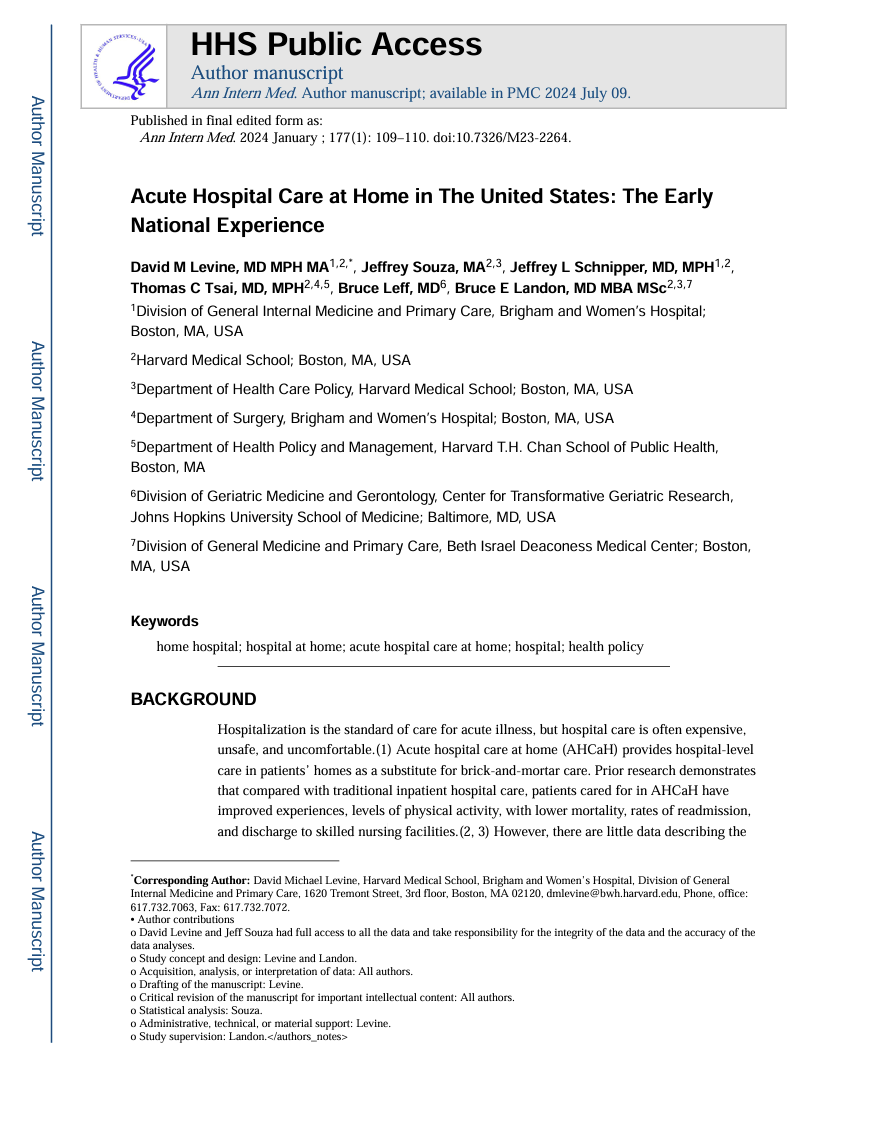Headline
Preliminary analysis shows that mortality and readmission rates for disabled and Medicare-Medicaid dually eligible individuals receiving hospital at home services are similar to outcomes for overall Medicare population.
Background
The Acute Hospital Care at Home waiver was issued by the Centers for Medicare and Medicaid Services in 2020 and created a new pathway for hospitals to be reimbursed for hospital at home services for Medicare enrollees (and for Medicaid enrollees in some states). This study reports on preliminary national data from patients who received care through this program, and measures both mortality and readmissions rate, stratified by disability status and dual eligibility.
Findings
Patients who received services under this waiver were medically complex, and the five most common diagnoses at discharge from the hospital at home program were heart failure, respiratory infection, sepsis, kidney/urinary tract infection, and cellulitis. There were no significant differences between mortality rates and readmissions rates for participants with disabilities and for individuals dually eligible for Medicare and Medicaid as compared to the overall population of all Medicare-enrolled participants. The study did not use a comparison group, such as Medicare enrollees receiving brick-and-mortar hospital services.
Policy/Program Takeaways
While most studies of hospital at home programs have not focused on Medicaid enrollees, this preliminary analysis suggests that the hospital at home model can support individuals who are dually eligible or have a disability.

